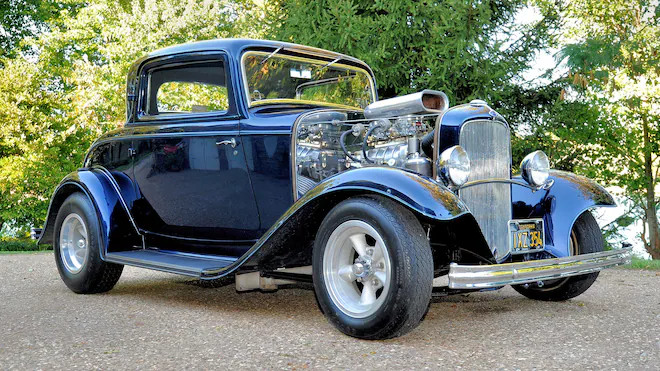
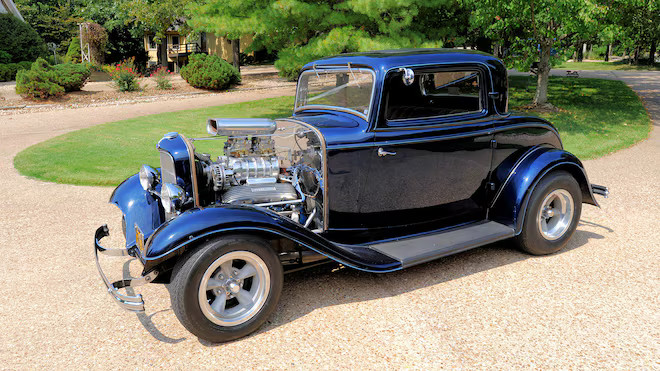
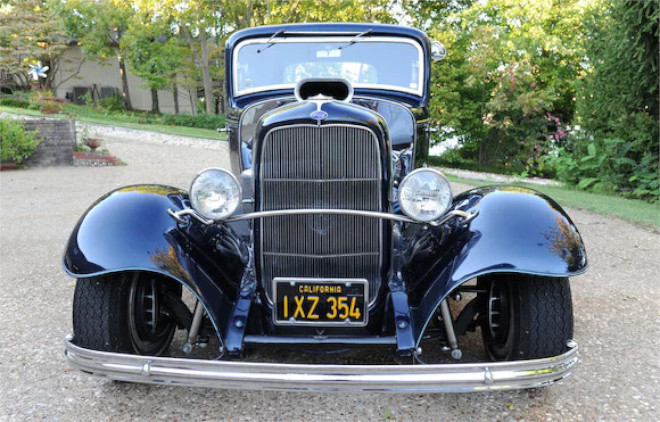
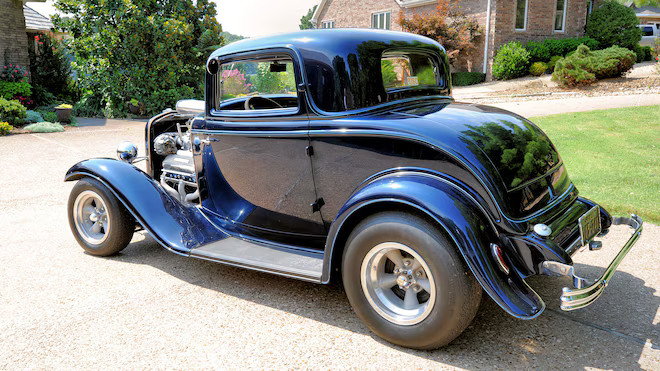
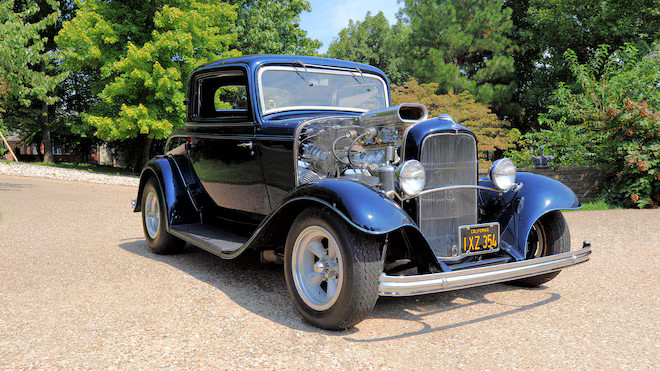
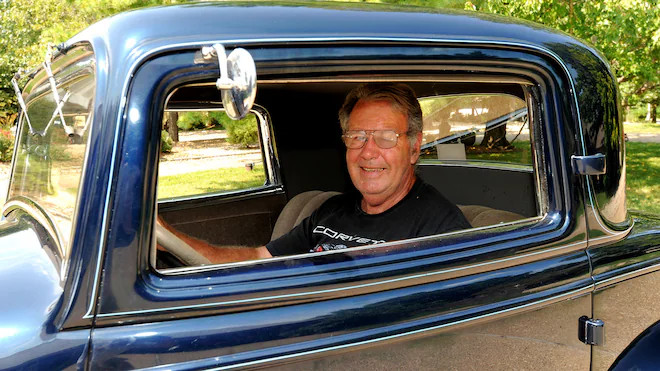
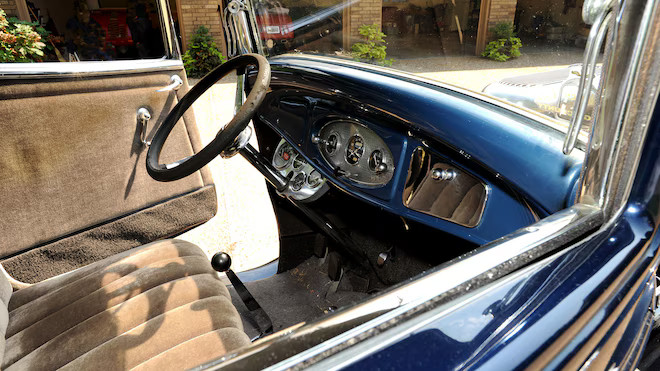
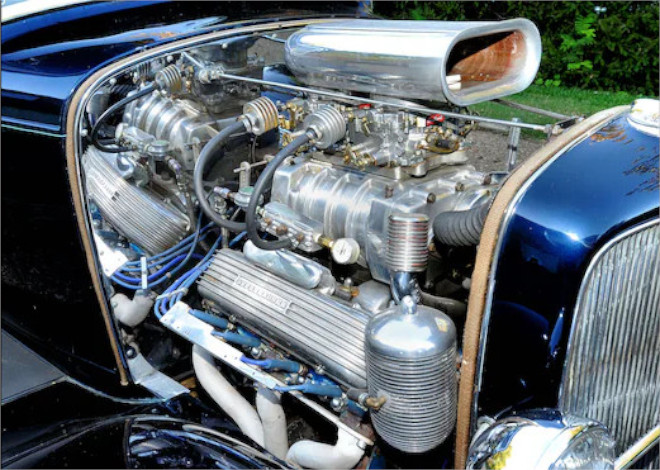
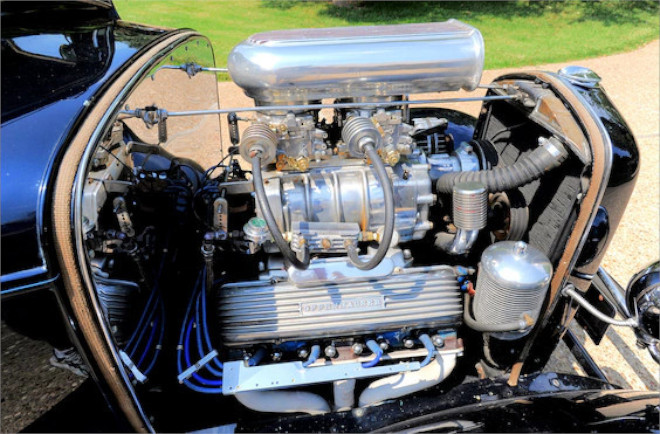
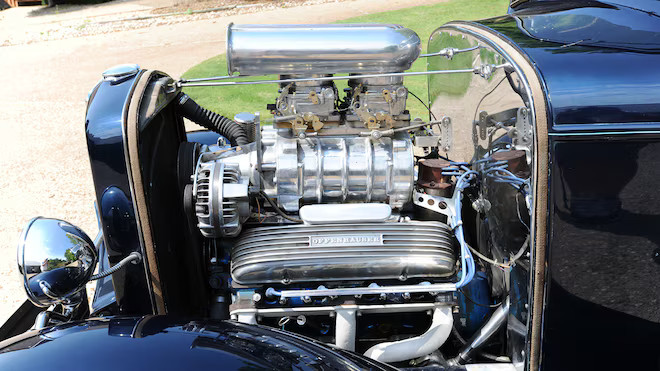
1932 Ford 3 Window Coupe
Bella Vista, AR, 72715
Description:
We finally reached the doorway that separated the oversized two-car garage from the rest. Stepping into the large, air-conditioned space, I was finally rewarded with my first look at Bob's pride and joy: his full-fendered, three-window '32 Ford coupe, the car that spawned the rumor I had initially inquired about.
Even though it certainly had an old-school look, one would be hard-pressed not to believe it was anything but a glass-bodied, fairly recent build. As I stared, trying to absorb it all, Bob laughed and told me he bought the car from the original owner in 1953 while still in high school. He remembers it had only 30,000 miles on the odometer.
No flathead sat in this one, however. A '49 Cadillac V-8, pulled from a local salvage yard, was installed by the young, mechanically inclined Bob shortly after he bought the car. First, though, the engine was bored 0.060 and fitted with Jahns pistons while the heads were being ported. Bell supplied the GMC 4-71 blower and Cragar manifold with two Carter AFBs pirated from a wrecked Buick. (Edelbrock 600s now sit on top.) Bell also supplied the Joe Huntprepped Vertex mag that Bob states has never been worked on or serviced since it was new, and that the blower belts are the original ones from Bell.
An early Chet Herbert roller cam has a lot to do with the healthy loping idle. In California, Bob lived close to Chet's shop, and during a teardown one time he took the cam by to have it checked. After inspecting the numbers engraved on it, Chet told him it was one of the very first cams he'd ground.
When his friend Tom McMullen changed engines and needed to replace the firewall in his famous '32 roadster, Bob bought the chromed piece for a paltry $25, a nice addition that sets off the brightwork in front of it. Blair's Speed Shop's ace welder (and custom banjo maker) Okie Adams built the dropped axle, giving the car a nice, subtle forward rake.
Lincoln '40s-era hydraulic brakes provide the stopping power, while an early '60s Chevy rearend with coilovers, '60s American TorqThrust wheels, a four-speed Muncie transmission mated to an aluminum flywheel, Ford F-150 steering box, and an interior by an Orange County shop that reproduced the original are among very few changes or modifications made since Bob bought the car 65 years ago. The original '32 radiator, albeit aided by an electric fan, never lets the big-inch Cad mill overheat—even on a hot and humid summer afternoon drive.
When I mentioned the beautiful, dark blue paint, it left me shaking my head when I found out Bob had sprayed the gorgeous lacquer in 1955, a flawless job attesting to another of his many talents. The tasty pinstriping was also added in the 1950s at a cost of only $25. Bob was also emphatic about the fact that the car has all its original body parts and has never had any bodywork. No dents ever!
Noticing the USC sticker on the rear window and the "Obsoletes Limited" of Orange County on the front windshield led me to a conversation with Bob about his background. This turned out to be as interesting—and eclectic—as his cars and parts. His life revolved around four-wheeled machinery while working for or with some of the most interesting personalities in the genre, such as customizer Gene Winfield, designer Larry Shinoda, Pete Brock, Paul Newman, and Bob Sharp. It sounded like quite a ride.
Bob had just started high school in Irvington, New York, when he was given a '40 Ford convertible by his brother, who was leaving for the Navy. By 13, he had already learned how to weld, and the '40 was soon chopped with a Carson-style top in place and a hot flathead under the hood. After an accident claimed the car, Bob got his chance when he bought the '32 coupe.
Bob and his Deuce coupe set off for California after high school. While in college in Fresno studying engineering, the young rodder made friends with Gene Winfield and eventually went to work for him. In 1961, Gene sent him on the road, driving the famous Jade Idol custom to Indianapolis for the car show that was a co-event with the NHRA Nationals drag race. During downtime in Indy, Bob spent hours playing basketball at a nearby court with entrants George Barris, Ed "Big Daddy" Roth, Carl Casper, and others, leading to longtime friendships.
With undergraduate and graduate engineering degrees under his belt, he went to work with Chrysler Corporation, where he was involved in everything from its ill-fated turbine car program to "having to" put miles on the lightweight, Hemi-powered Dodge cars to satisfy "used" racing association rules. He later left to work for the up-and-coming Datsun, eventually becoming that company's national technical engineering manager as well as working closely in its (enormously budgeted) racing program with drivers Pete Brock, Paul Newman, and Bob Sharp. Bonneville was a yearly testbed for Datsun, and each year Bob took several cars, along with a crew of engineers and designers, to race at the Salt Flats.
